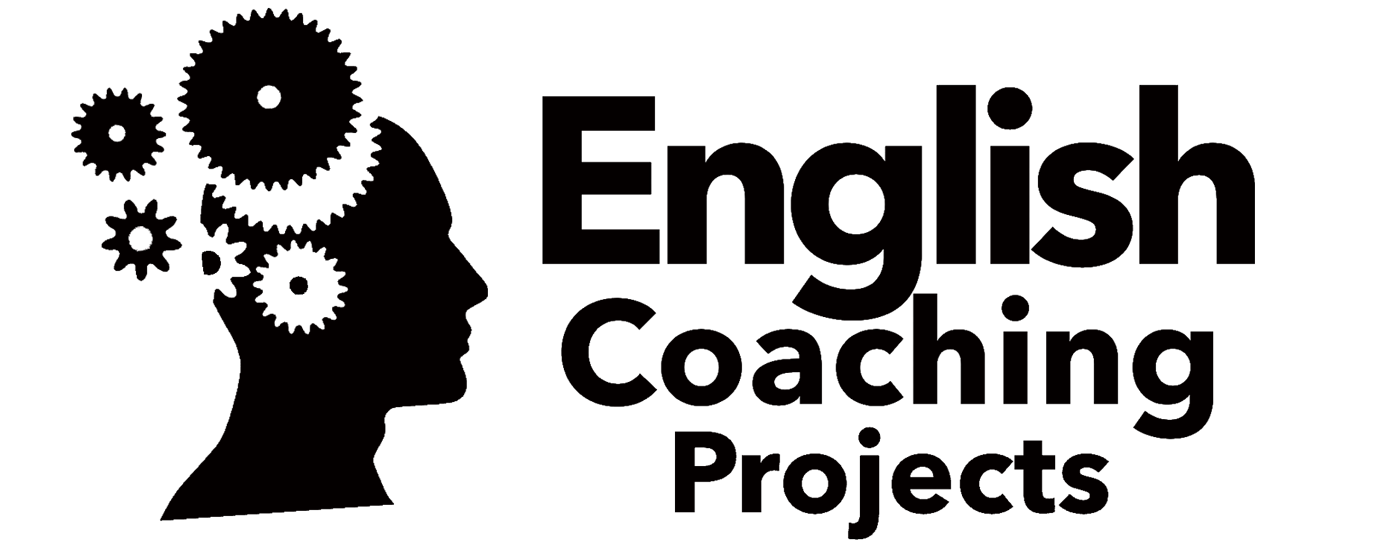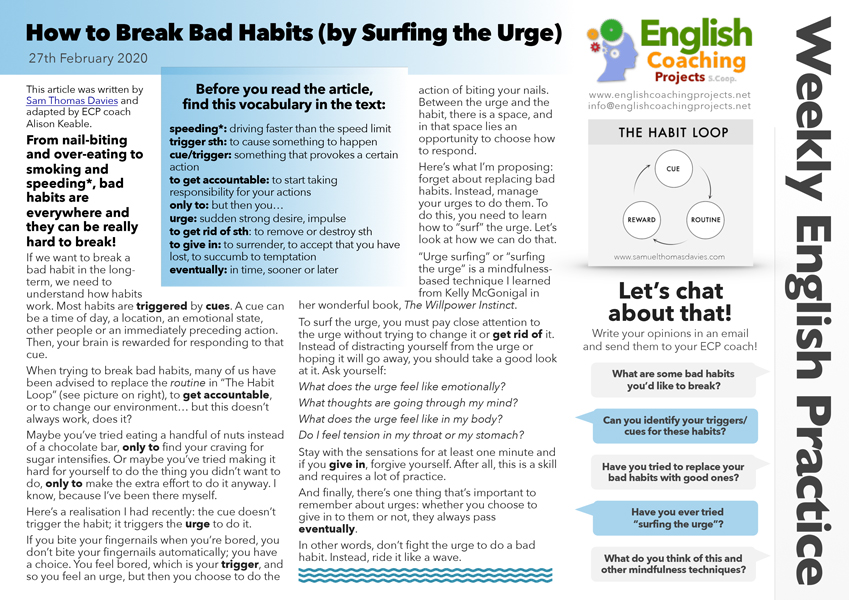Do you want to break bad habits? It can be really hard, so ECP coach Ali has some tips for you.
Click on the image to download the pdf
Read and check you understand this vocabulary before you read and listen to the text:
speeding: driving faster than the speed limit
trigger sth: to cause something to happen
cue/trigger: something that provokes a certain action
to get accountable: to start taking responsibility for your actions
only to: but then you…
urge: sudden strong desire, impulse
to get rid of sth: to remove or destroy sth
to give in: to surrender, to accept that you have lost, to succumb to temptation
eventually: in time, sooner or later
Listen to the audio (refresh the page if it’s not visible)
This article was written by Sam Thomas Davies and adapted by ECP coach Alison Keable.
From nail-biting and over-eating to smoking and speeding, bad habits are everywhere and they can be really hard to break!
If we want to break a bad habit in the long-term, we need to understand how habits work. Most habits are triggered by cues. A cue can be a time of day, a location, an emotional state, other people or an immediately preceding action. Then, your brain is rewarded for responding to that cue.
When trying to break bad habits, many of us have been advised to replace the routine in “The Habit Loop” (see picture on right), to get accountable, or to change our environment… but this doesn’t always work, does it?
Maybe you’ve tried eating a handful of nuts instead of a chocolate bar, only to find your craving for sugar intensifies. Or maybe you’ve tried making it hard for yourself to do the thing you didn’t want to do, only to make the extra effort to do it anyway. I know, because I’ve been there myself.
Here’s a realisation I had recently: the cue doesn’t trigger the habit; it triggers the urge to do it.
If you bite your fingernails when you’re bored, you don’t bite your fingernails automatically; you have a choice. You feel bored, which is your trigger, and so you feel an urge, but then you choose to do the action of biting your nails. Between the urge and the habit, there is a space, and in that space lies an opportunity to choose how to respond.
Here’s what I’m proposing: forget about replacing bad habits. Instead, manage your urges to do them. To do this, you need to learn how to “surf” the urge. Let’s look at how we can do that.
“Urge surfing” or “surfing the urge” is a mindfulness-based technique I learned from Kelly McGonigal in her wonderful book, The Willpower Instinct.
To surf the urge, you must pay close attention to the urge without trying to change it or get rid of it. Instead of distracting yourself from the urge or hoping it will go away, you should take a good look at it. Ask yourself:
What does the urge feel like emotionally?
What thoughts are going through my mind?
What does the urge feel like in my body?
Do I feel tension in my throat or my stomach?
Stay with the sensations for at least one minute and if you give in, forgive yourself. After all, this is a skill and requires a lot of practice.
And finally, there’s one thing that’s important to remember about urges: whether you choose to give in to them or not, they always pass eventually.
In other words, don’t fight the urge to do a bad habit. Instead, ride it like a wave.
Let’s chat about that!
Write your opinions in an email and send them to your ECP coach!
What are some bad habits you’d like to break?
Can you identify your triggers/cues for these habits?
Have you tried to replace your bad habits with good ones?
Have you ever tried “surfing the urge”?
What do you think of this and other mindfulness techniques?


